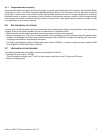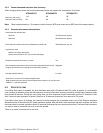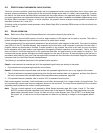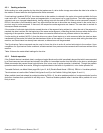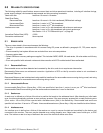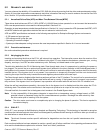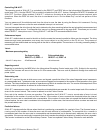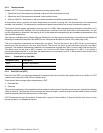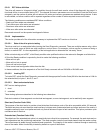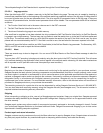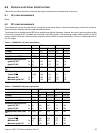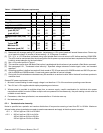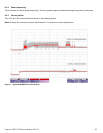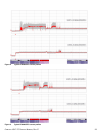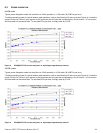
CHEETAH 15K.7 FC PRODUCT MANUAL, REV. E 17
5.2.5 Thermal monitor
Cheetah 15K.7 FC drives implement a temperature warning system which:
1. Signals the host if the temperature exceeds a value which would threaten the drive.
2. Signals the host if the temperature exceeds a user-specified value.
3. Saves a S.M.A.R.T. data frame on the drive which exceeds the threatening temperature value.
A temperature sensor monitors the drive temperature and issues a warning over the interface when the temperature
exceeds a set threshold. The temperature is measured at power-up and then at ten-minute intervals after power-up.
The thermal monitor system generates a warning code of 01-0B01 when the temperature exceeds the specified limit in
compliance with the SCSI standard. The drive temperature is reported in the FRU code field of mode sense data. You can
use this information to determine if the warning is due to the temperature exceeding the drive threatening temperature or the
user-specified temperature.
This feature is controlled by the Enable Warning (EWasc) bit, and the reporting mechanism is controlled by the Method of
Reporting Informational Exceptions field (MRIE) on the Informational Exceptions Control (IEC) mode page (1Ch).
The current algorithm implements two temperature trip points. The first trip point is set at 68°C which is the maximum
temperature limit according to the drive specification. The second trip point is user-selectable using the Log Select
command. The reference temperature parameter in the temperature log page (see Table 1) can be used to set this trip point.
The default value for this drive is 68°C, however, you can set it to any value in the range of 0 to 68°C. If you specify a
temperature greater than 68°C in this field, the temperature is rounded down to 68°C. A sense code is sent to the host to
indicate the rounding of the parameter field.
5.2.6 Drive Self Test (DST)
Drive Self Test (DST) is a technology designed to recognize drive fault conditions that qualify the drive as a failed unit. DST
validates the functionality of the drive at a system level.
There are two test coverage options implemented in DST:
1. Extended test
2. Short test
The most thorough option is the extended test that performs various tests on the drive and scans every logical block address
(LBA) of the drive. The short test is time-restricted and limited in length—it does not scan the entire media surface, but does
some fundamental tests and scans portions of the media.
If DST encounters an error during either of these tests, it reports a fault condition. If the drive fails the test, remove it from
service and return it to Seagate for service.
Table 1: Temperature Log Page (0Dh)
Parameter Code Description
0000h
Primary Temperature
0001h
Reference Temperature



